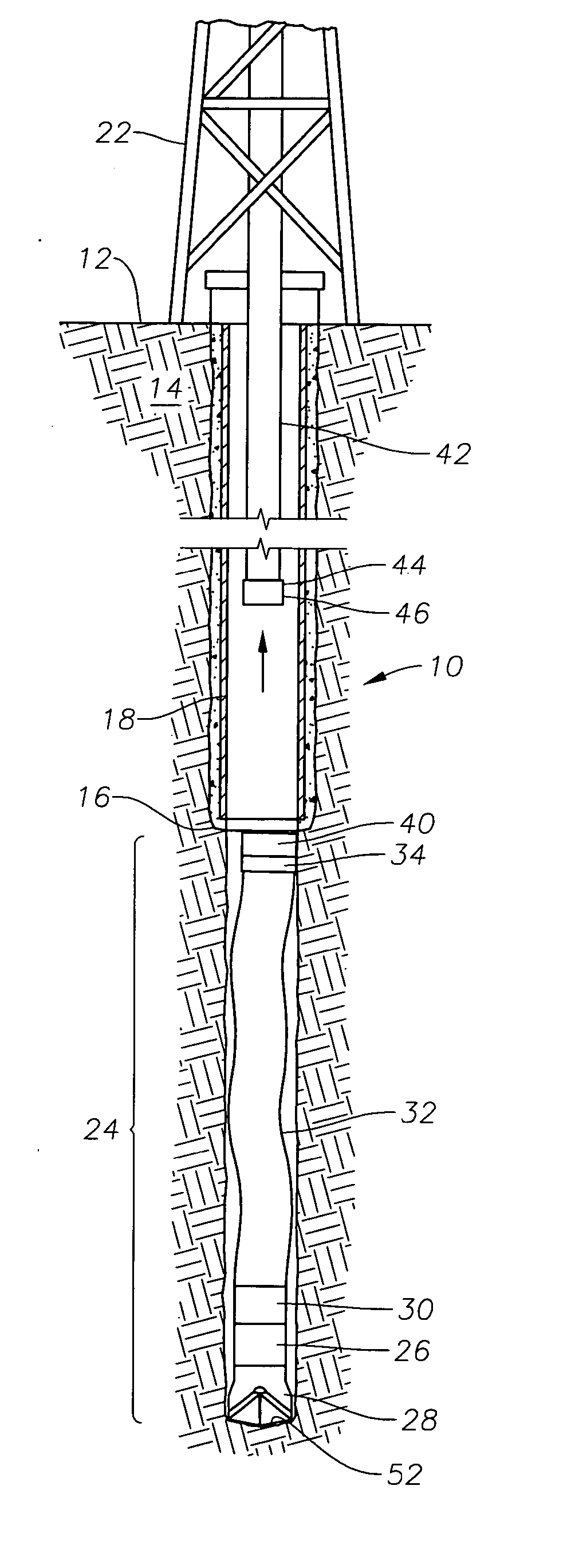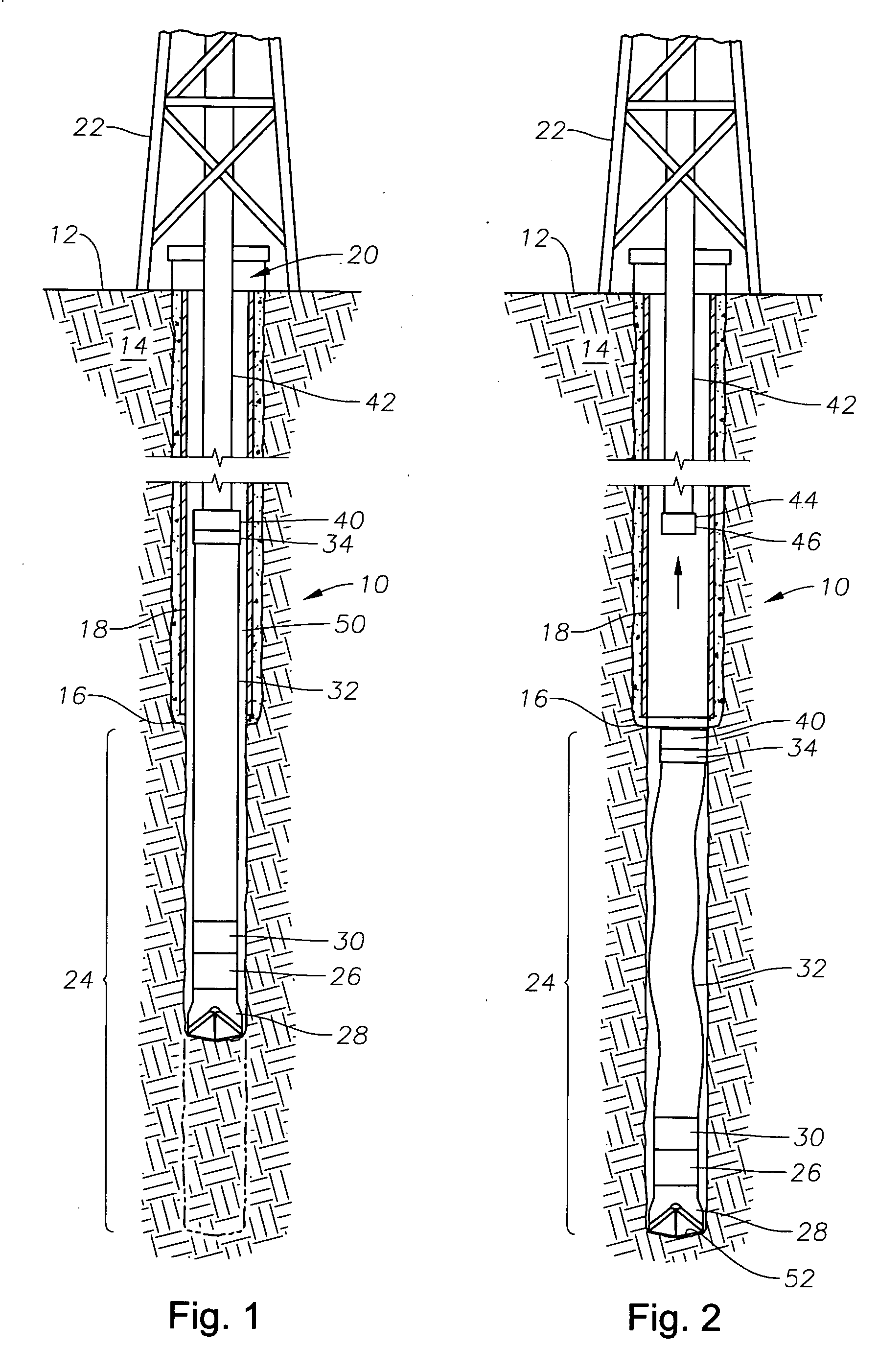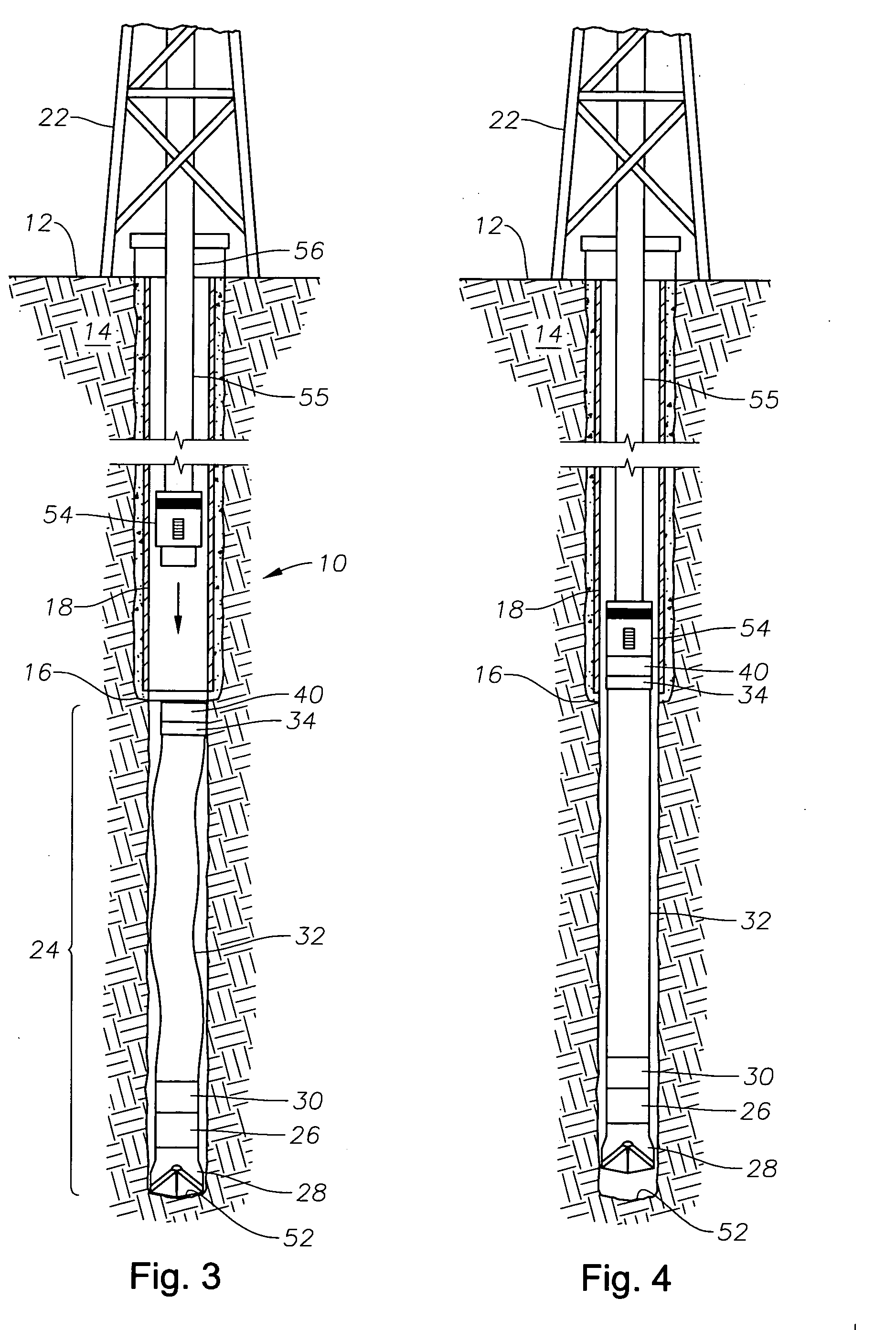Latchable hanger assembly for liner drilling and completion
- Summary
- Abstract
- Description
- Claims
- Application Information
AI Technical Summary
Benefits of technology
Problems solved by technology
Method used
Image
Examples
Embodiment Construction
[0022]FIG. 1 depicts an exemplary wellbore 10 that has been drilled from the surface 12 through the earth 14 to an original depth 16. Metallic casing 18 has been cemented in the wellbore 10 from the surface 12 down near the original depth 16. A liner drilling system 20 has been inserted into the wellbore 10 from a drilling rig 22 at the surface 12. In FIG. 1, the liner drilling system 20 is drilling a deeper interval portion 24 of the wellbore 10. The liner drilling system 20 includes a bottom hole assembly 26 with a drill bit 28 thereupon. The bottom hole assembly 26 is attached by a landing collar 30 to a section of liner 32. The liner section 32 is of a length that approximates the length of the deeper interval portion 24 to be drilled. Secured to the upper end of the liner section 32 is a liner setting sleeve 34. The liner setting sleeve 34 is shown in greater detail in FIG. 7. It is noted that the liner setting sleeve 34 has a smooth external radial surface 36 and is affixed by...
PUM
 Login to View More
Login to View More Abstract
Description
Claims
Application Information
 Login to View More
Login to View More - R&D
- Intellectual Property
- Life Sciences
- Materials
- Tech Scout
- Unparalleled Data Quality
- Higher Quality Content
- 60% Fewer Hallucinations
Browse by: Latest US Patents, China's latest patents, Technical Efficacy Thesaurus, Application Domain, Technology Topic, Popular Technical Reports.
© 2025 PatSnap. All rights reserved.Legal|Privacy policy|Modern Slavery Act Transparency Statement|Sitemap|About US| Contact US: help@patsnap.com



